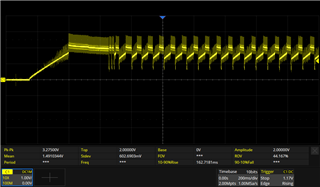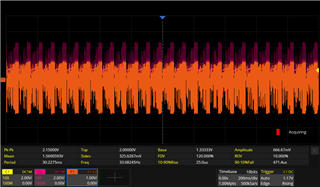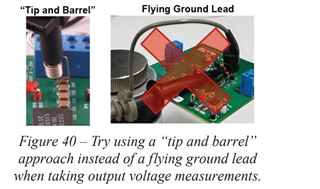Other Parts Discussed in Thread: TPS62813
Hi all,
(First post/question)
This is regarding a TPS628132MQWRWYRQ1, fixed 1.8V regulator.
I have the following circuit to generate a 1.8V rail, and upon applying 5V on the input, it starts up and then enters a noisy hiccup scenario, which never ends. It is also getting very hot on the board (>70C) so it's dissipating a lot of energy. I don't leave it on long.

Here are some plots of the output, it averages about 1.5V:

Here is the voltage across the inductor (C1 and C2 are voltages either side, with the orange plot being C1-C2):

I've tried everything I can think of:
- Verified that resistance checks across all pins to ensure no shorts
- Output resistance ~= 300Ohm
- Injected 1.8V on the output (without 5V on), and measured <0.4A which is much under the rated 3A
- Increased the soft start time to ~200ms (shown in the first plot above) to mitigate effects of excessive capacitance on the 1V8 rail (by other circuits on the board) causing it to go into overcurrent shutdown during startup
- Verified that the 5V0 rail is not drooping or anything upon startup
- Changed the compensation resistor to GND as well as 5V0 rail, to see if that has any effect and I can see the difference in hiccup frequency but otherwise it still does it
I have 2 boards made, and they both exhibit this behaviour so it doesn't seem to be a manufacturing fault.
I'm using this design on a separate board and it works fine.
What could be leading to this behaviour? Would appreciate any ideas.
Thanks!


